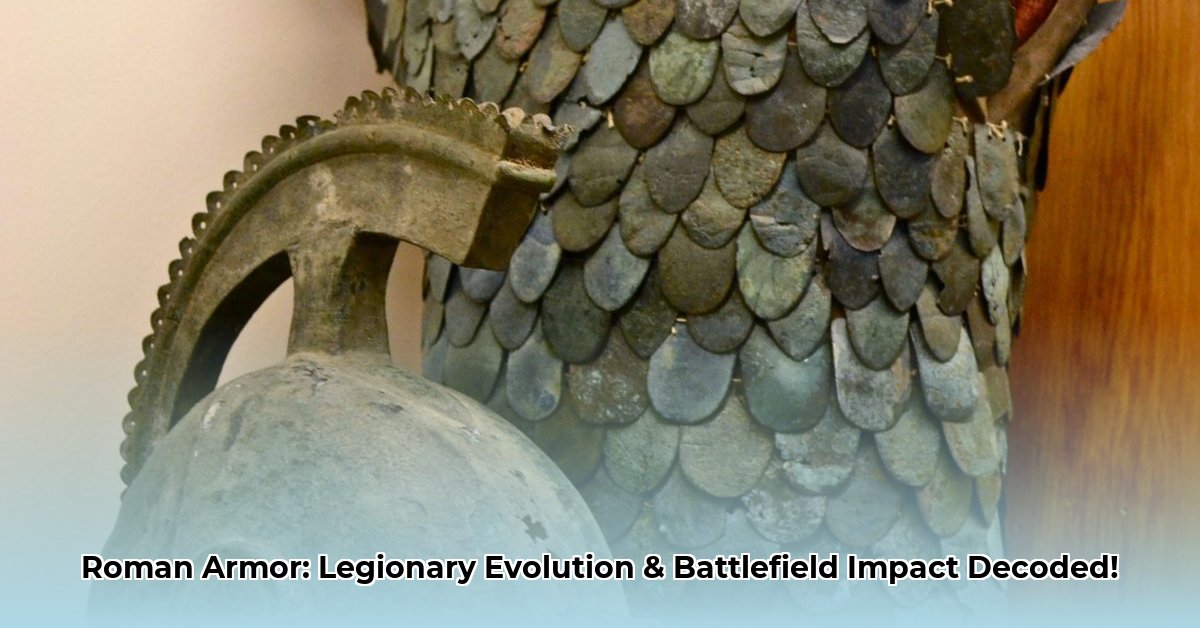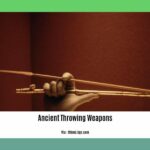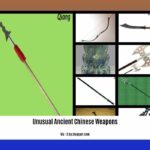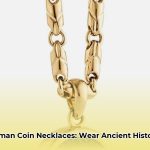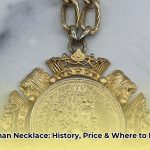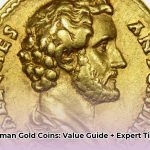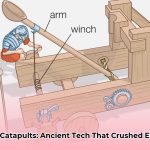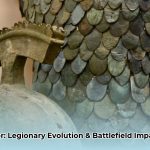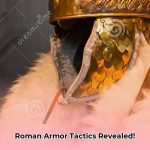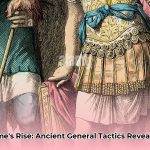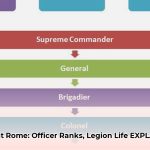The Roman Empire’s formidable power was forged not only by disciplined legions but also by their remarkably effective and evolving military equipment. From the early days of the Republic to the vast expanse of the Imperial era, Roman soldiers were outfitted with a precise arsenal of armor, weapons, and tools, collectively known as the res militaris or disciplina. This standardization and continuous innovation provided a distinct advantage, ensuring military excellence and victory across diverse battlefields. Learn more about Roman soldier armor here. This article delves into the dynamic world of Roman personal equipment, exploring its evolution, construction, tactical significance, and the logistical genius that kept the legions supplied and battle-ready.
The Evolution of Roman Military Equipment: From Militia to Professional Army
The Roman army did not emerge fully formed with its iconic gear. Its equipment evolved significantly through centuries of conflict and adaptation, borrowing ideas and refining designs to meet new challenges.
Early Republic: Citizen Soldiers and Adopted Gear
Initially, Rome’s army comprised a citizen militia, with soldiers providing their own equipment. Early influences came from the Greeks, particularly evident in the adoption of the clipeus, a round shield characteristic of hoplite phalanxes. However, as Roman tactics shifted from the phalanx to the more flexible manipular system, a larger, oblong shield called the scutum became standard. This early scutum was convex and oblong, offering greater body coverage. Weapons were often based on Greek and Etruscan models, primarily thrusting spears (hastae) and short swords.
The Punic Wars and Republican Standardization
The intense conflicts of the Punic Wars (3rd-2nd centuries BCE) against Carthage spurred significant military reforms and equipment standardization. This era saw the widespread adoption of the gladius Hispaniensis, a short, stabbing sword influenced by Celtic and Iberian designs, alongside the heavy throwing javelin, the pilum. The army was typically divided into three lines:
* Hastati: The youngest soldiers, armed with two pila and a gladius, carrying the early scutum.
* Principes: Slightly older, similarly equipped.
* Triarii: Veterans, who retained the traditional hasta (spear) as their primary weapon.
* Velites: Light infantry, armed with lighter javelins (verutum) and a small, circular shield called a parma. The parma was exceptionally strong for its size, made from multiple layers of glued wood and leather, often with an iron frame.
Marian Reforms and Imperial Efficiency
The reforms initiated by Gaius Marius in 107 BCE were pivotal, transforming the army into a professional, paid force open to poorer, unpropertied citizens. This dramatically increased the demand for standardized, state-supplied equipment, leading to mass production. While some historians argue this led to a decline in quality compared to earlier eras, it ensured vast numbers of soldiers were uniformly equipped.
* Uniformity: Distinctions between hastati and principes were abolished; all legionaries became heavy infantry armed with the pilum and gladius.
* The “Marius’ Mules”: Soldiers were now required to carry a significant portion of their own gear (up to 15 days’ rations, entrenching tools, cooking equipment) on a furca (carrying pole), reducing reliance on baggage trains and increasing army mobility.
Throughout the Imperial period, Roman equipment continued to adapt. The gladius saw variations like the Mainz and Pompeii types, reflecting regional preferences and manufacturing evolution. The spatha, a longer sword, gradually gained prominence, first with cavalry in the 1st century CE, then replacing the gladius for infantry by the late 2nd or early 3rd century CE, aligning with a shift towards spear-based combat.
Late Roman Empire: Adapting to New Threats
The 3rd and 4th centuries CE brought further changes, driven by economic pressures and the rise of mobile, mounted enemies like the Sassanid Persians and Germanic tribes.
* Armor Shift: The complex lorica segmentata became less common, with lorica hamata (mail) and lorica squamata (scale) returning as the primary forms of body armor. These were often more cost-effective to produce and repair.
* Shields: The rectangular scutum gave way to oval or round shields, offering better maneuverability against flanking tactics.
* Weapons: The pilum was supplemented or even replaced by lighter javelins like the spiculum or lancea, and lead-weighted darts known as plumbatae (or martiobarbuli), carried clipped to the inside of shields.
* Helmets: Simpler, more functional helmets like the Intercisa type became common, often featuring a two-piece bowl joined by a ridge, offering strong protection while being easier to mass-produce. Later, even simpler Spangenhelms appeared, reflecting Eastern influences.
Core Components of Roman Personal Equipment: A Detailed Examination
The Roman soldier’s personal gear encompassed far more than just armor. Each item was designed for practicality, durability, and tactical utility.
Body Armor: Layers of Protection
Roman legionarises utilized several types of metal body armor, each with distinct advantages and construction methods:
-
Lorica Hamata (Mail Armor): This ubiquitous armor, likely adopted from the Celts, consisted of thousands of interlocking rings, typically made of iron (though sometimes bronze). Rings alternated between closed, solid rings and riveted rings, creating a highly flexible, strong, and reliable defense. Each ring had an inside diameter of 5-7 mm. The lorica hamata usually featured shoulder doublings or flaps, similar to the Greek linothorax, fastened by brass or iron hooks. While labor-intensive to manufacture, a well-maintained hamata could last for decades, providing excellent protection against slashing attacks. Its flexibility made it ideal for long marches and extended combat. However, it was more vulnerable to direct thrusts or arrows that could slip between the rings, and offered less blunt force trauma protection than plate armor.
-
Lorica Segmentata (Segmented Plate Armor): Iconic to the early Imperial period (c. 9 BCE to 3rd century CE), this armor consisted of broad ferrous strips (“girth hoops”) fastened to internal leather straps. The strips overlapped downwards, encircling the torso in two halves, secured by brass hooks and leather laces. The shoulders were protected by additional strips and breast/back plates. This complex design provided superior protection against direct hits and missile strikes, being virtually impenetrable to most weapons. Modern replicas demonstrate its effectiveness, though a padded undergarment (subarmalis) was essential for comfort and shock absorption. The segmentata could be disassembled into four sections for compact storage. Known types include Kalkriese (c. 20 BCE-50 CE), Corbridge (c. 40-120 CE), and Newstead (c. 120-early 4th century CE). Its high production cost, difficulty in repair, and demanding maintenance (constant cleaning and oiling to prevent rust) are often cited as reasons for its eventual decline and the army’s reversion to mail and scale.
-
Lorica Squamata (Scale Armor): Used throughout the Republic and Empire, lorica squamata was made from small, overlapping metal scales (individual squamae) sewn or wired onto a fabric backing. Scales, typically iron or bronze (sometimes alternating metals or tinned), ranged from 6mm to 5cm wide and 1.2cm to 8cm tall, with a common thickness of 0.5-0.8mm. They had multiple holes (4-12) for attachment, creating a flexible, multi-layered surface that offered good protection against slashing and piercing attacks. It was often worn by standard-bearers, musicians, centurions, cavalry, and auxiliary infantry. While perhaps vulnerable to upward thrusts in theory, its widespread and continuous use suggests this weakness was exaggerated.
Helmets: The Galea or Cassis
Roman helmets were crucial for head protection and evolved considerably:
* Montefortino Helmet: An early Republican type (c. 300 BCE-1st century BCE) of Celtic origin, featuring a conical shape, top knob, and hinged cheek guards.
* Coolus Helmet: Directly replaced the Montefortino, raising the neck peak and adding a sturdy frontal peak, often mass-produced from brass or bronze.
* Imperial Gallic/Italic Helmets: Prominent in the 1st-2nd centuries CE, these iron helmets featured broader, ribbed neck guards, distinctive brow ridges, and hinged cheek guards that left ears exposed for battlefield awareness. The Imperial Italic types often had reinforcing peaks.
* Ridge Helmets/Spangenhelms: Adopted in the late Imperial period, these often featured simpler two-piece bowl constructions joined by a central ridge, reflecting Eastern design influences, and provided robust, cost-effective head protection.
Shields: The Indispensable Scutum
The scutum was more than just a defensive item; it was a cornerstone of Roman tactics:
* Early Scutum: Oblong and convex, used with the manipular formation.
* Imperial Scutum: By the 1st century BCE, it evolved into the iconic rectangular, semi-cylindrical shape, constructed from layers of wood (plywood) covered with calfskin and often adorned with legionary symbols. This shape provided excellent protection in close-quarters and was vital for formations like the testudo (tortoise), where soldiers interlocked shields to create an impenetrable, armored shell against missiles during sieges or when facing archers.
* Other Shields: The parma (small circular shield) was used by velites in the Republic. Cavalry and auxiliaries also used various oval or flat shields, particularly in the later Empire.
Offensive Weapons: The Steel of Rome
Roman soldiers were equipped with a precise array of offensive tools for close combat and ranged engagements:
* Pugio (Dagger): A heavy sidearm, typically with an 18-28 cm long, 5 cm wide leaf-shaped blade and a raised midrib. Early versions had wide, flat tangs and riveted grips. Around 50 CE, a rod tang was introduced, and later blades became narrower. Hilts were often decorated with inlaid silver. Its design ensured a secure grip, making it a reliable personal weapon.
* Gladius (Short Sword): The primary weapon of the Republican and early Imperial legionary, roughly 60 cm (24 inches) long. The gladius Hispaniensis was the earliest type, followed by designs like the Mainz gladius and Pompeii gladius. Blacksmiths crafted them with harder steels on the outer layers for strength and flexibility, and softer steels in the center. Legionaries wore their gladii on their right hips.
* Spatha (Long Sword): A longer sword, becoming standard for Roman cavalry in the 1st century CE and largely replacing the gladius for infantry by the late 2nd/early 3rd century CE. Its increased length was better suited for mounted combat and for infantry fighting combined with spears, allowing for greater reach. Shorter variations were called semispathae.
* Pilum (Heavy Throwing Javelin): The signature Roman javelin, typically under two meters long with an iron shank (60 cm, 7 mm diameter) topped by a pyramidal head. Weighing 2-4 kg, its design aimed to penetrate shields and armor, or, if stuck, to bend upon impact (or when a soldier attempted to remove it), rendering the enemy’s shield useless and preventing immediate re-use. Historical accounts from Caesar and Plutarch also confirm its use as a close-quarters melee weapon, a versatile tool in a legionary’s hand.
* Other Javelins: Lighter verutum for velites, and later lancea and spiculum influenced by Italic designs.
* Ranged Weapons:
* Arcus (Composite Bow) and Sagitta (Arrow): Used by sagittarii (archers), composite bows were made of horn, wood, and sinew.
* Cheiroballistra (Hand-held Crossbow): Mentioned by Vegetius and depicted in Gaulish reliefs, this mechanical weapon was occasionally used by Romans for both hunting and military purposes, even from horseback.
* Plumbatae (Lead-weighted Darts): Late infantrymen carried half a dozen of these darts, effective up to 30 meters, clipped to their shields, providing an anti-personnel projectile.
Entrenching Tools: The Builder’s Weapons
Roman legionaries were as much engineers as warriors, and their digging implements were essential:
* Dolabra (Pickaxe): A heavy-duty pickaxe, primarily an entrenching tool for digging fortifications and latrines, but also usable as an improvised weapon.
* Ligo (Pick-Mattock/Draw Hoe): Used for digging and clearing.
* Falx (Curved Blade): A sickle or scythe-like blade used for clearing vegetation.
* Other Tools: Each legionary typically carried either a shovel (batillum) or dolabra, a turf-cutting tool, or a wicker basket for hauling earth, essential for constructing the formidable Roman marching camps every night.
Personal Attire and Kit: Beyond the Armor
The Roman soldier’s personal kit was meticulously organized for efficiency and survival:
* Tunic: A basic woolen garment worn under armor, initially sleeveless, later with sleeves, and often worn with braccae (trousers) in colder climates. Its length often indicated rank.
* Subarmalis: A padded jacket of linen or leather worn under armor for comfort, shock absorption, and to prevent chafing, enhancing soldier endurance.
* Focale: A scarf worn to protect the neck from chafing by the armor or helmet.
* Balteus: A sword belt, often decorated, which also denoted rank when combined into the cingulum militare.
* Braccae: Woolen trousers, adopted for colder climates.
* Subligaria: Underpants, confirmed by archaeological finds like the Vindolanda tablets.
* Cloak (Sagum/Paenula): Woolen cloaks, insulated and naturally water-repellent, fastened with a fibula. The paenula* was hooded. These long cloaks were crucial for warmth, especially as soldiers often slept in the open.
* Caligae (Military Boots): Heavy-soled leather boots with hobnails for added strength and grip, laced up the center of the foot and ankle, similar to modern cleats. They provided excellent traction and ventilation, preventing foot ailments.
* Pteruges: Leather or fabric strips forming a skirt or sleeves, usually part of the subarmalis, providing protection to limbs while maintaining mobility and ventilation. They could be adorned with small metal studs for extra defense.
* Military Pack (Sarcina): Carried on a furca, containing essential items such as a loculus (leather satchel), waterskin, up to 15 days’ food supply, cooking equipment (patera, pot, skewer), and entrenching tools.
* Siege Engines and Field Defenses:
* Ballista: A powerful torsion catapult launching heavy bolts or stone projectiles.
* Scorpio: A smaller, torsion-powered catapult firing piercing bolts, with 60 typically assigned per legion.
* Onager: A torsion siege engine hurling stones in a high arc, named for its powerful “kick.”
* *Tribulus (Caltrop):
- Unlock History: Ancient Roman Coin Necklace Trends & Buys - August 17, 2025
- Beyond Gladiators: Achievements in Ancient Rome Still Shaping Our World - August 17, 2025
- Unearth ancient roman necklace history: price & where to buy now - August 17, 2025
